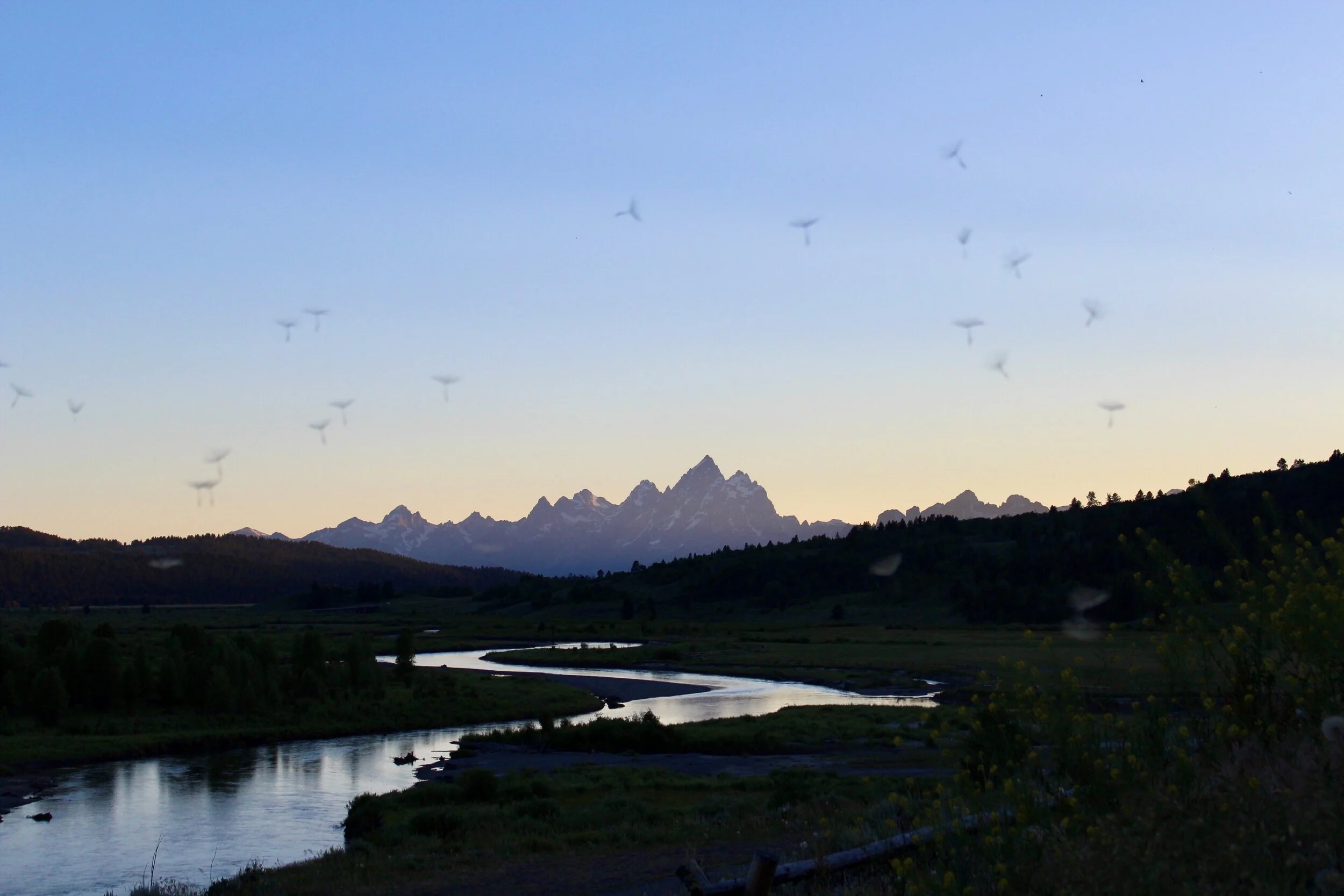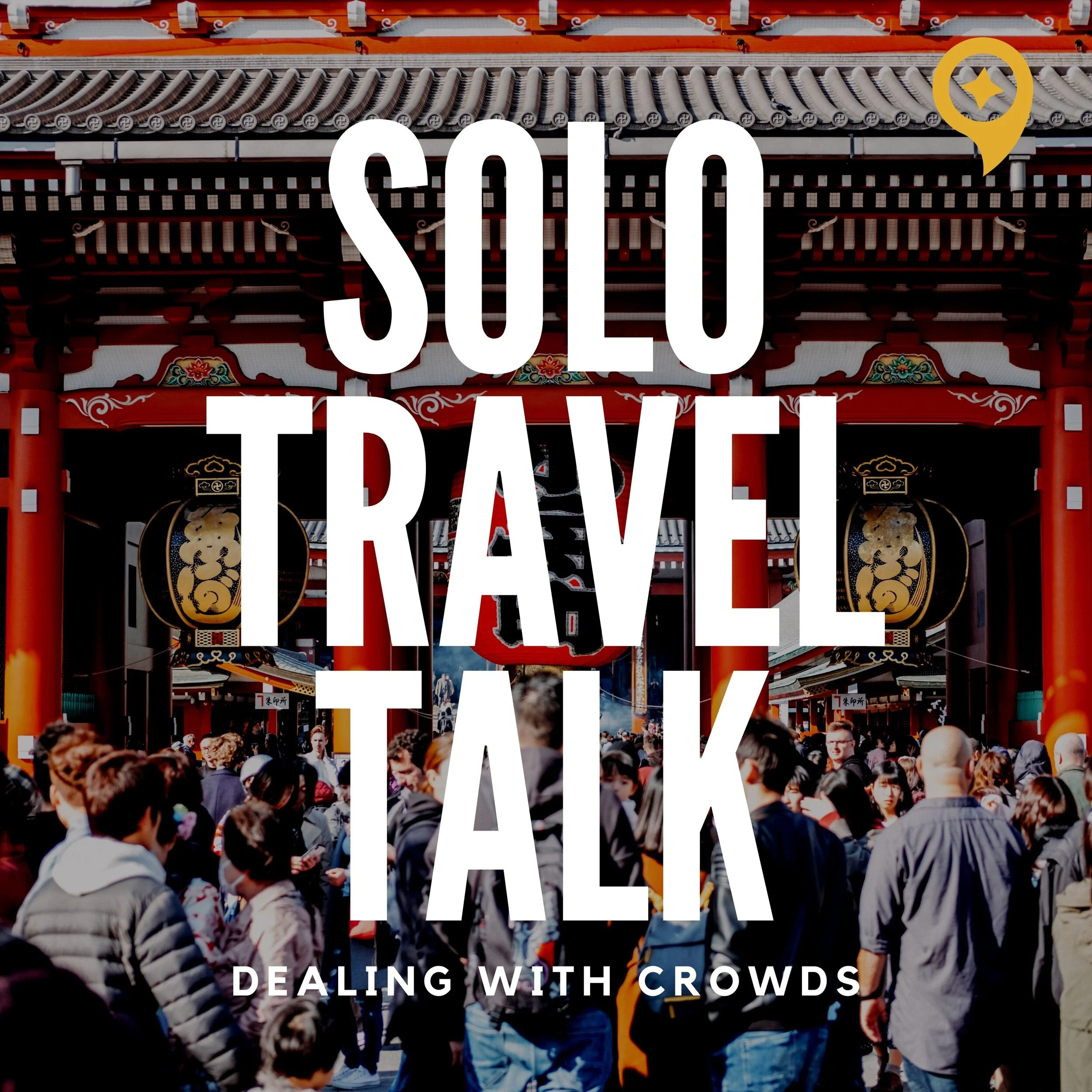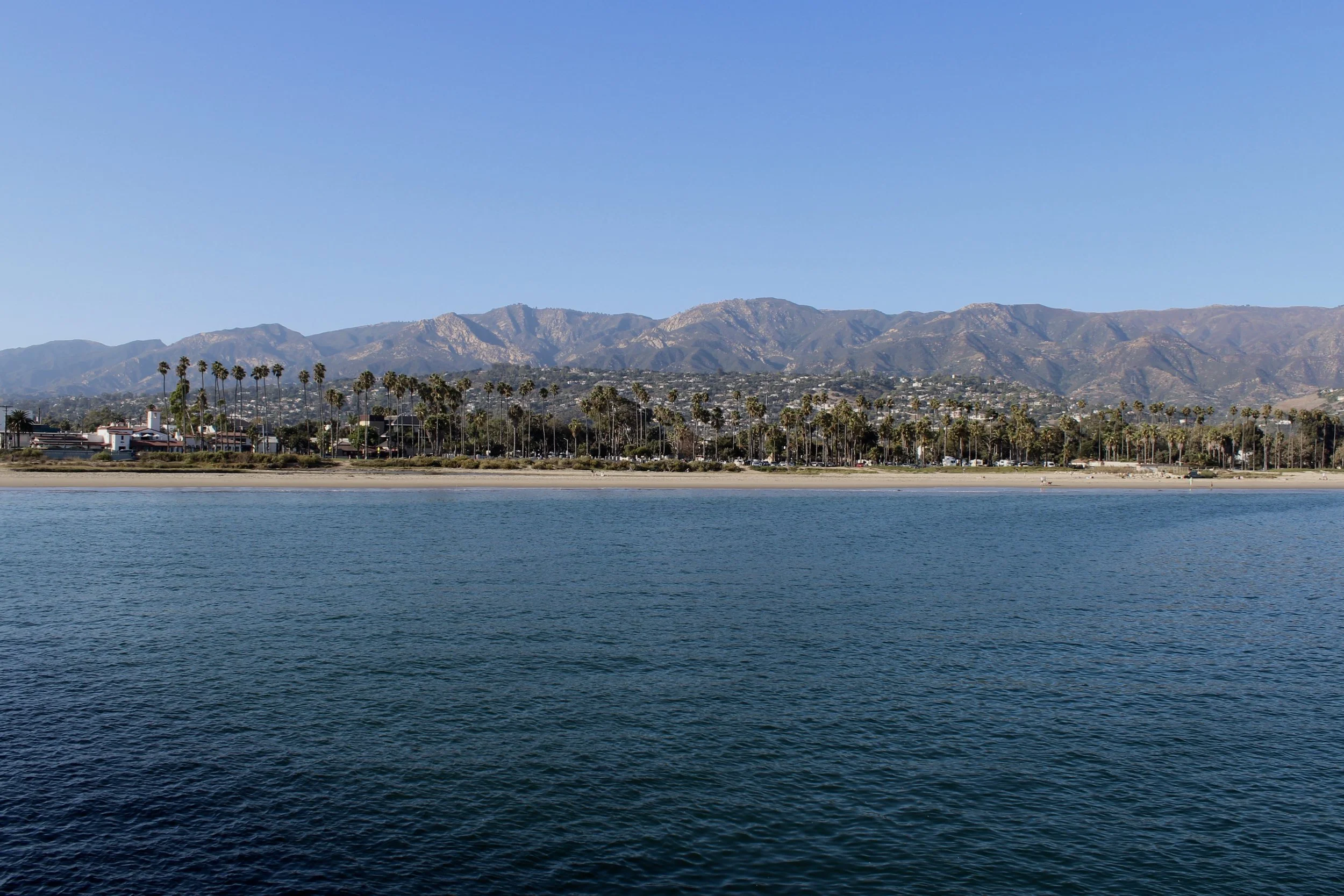As I stepped off the plane and onto the tarmac at Ayers Rock Airport in the center of the Australian Outback, I took a 360 degree look around and saw nothing but semi-arid desert in every direction. I thought to myself, “If a true middle of nowhere exists, this is it.”
I spent five months last year living and studying in Sydney, Australia. I was infatuated by the natural beauty, history and uniqueness of this country, and I wanted to see it all. Upon arriving, however, I quickly realized that 5 months was not nearly enough time to see an entire country as large as the United States. Thus, I was forced to condense my list of destinations and prioritize my favorites. The number one slot was obvious:
The dazzling red sand of the Outback with Uluru in the distance
I couldn’t come to Australia and not see the Outback.
Prior to moving to Australia, I did some research on the Australia Outback and what there was to see there. As you might know, most of Australia’s population is concentrated on the outer perimeter, and the rest of the vast interior is considered the Outback. It is mind-bogglingly huge, and surprisingly diverse with everything from lush jungle to harsh desert.
A quick Google search of the Outback led me to images of this colossal orangey-red rock located, quite literally, in the middle of the continent. The area where this rock is located is referred to as the Red Centre. Not only do stunning, fiery red sands dominate this land, but the Red Centre is also characterized by lush greenery, abundant water holes, dramatic gorges, and sacred aboriginal sites, including this towering red rock, called Uluru (pronounced oo-luh-roo) or Ayers Rock. In my mind, seeing this giant rock in the middle of the desert was the epitome of the Australian adventure I was chasing. Little did I know that my experience at Uluru was to impact me so personally and so profoundly.
Uluru in the distance
A Bit of History on Uluru and its neighbor, Kata Tjuta
Uluru is an enormous sandstone formation that stretches 1,100 feet into the sky and another 3 miles into the ground. The rock itself is actually grey, but oxidation of its iron content has caused it to rust, giving it its red color. Kata Tjuta (pronounced kah-tah ju-tah) is an equally impressive formation comprising of 36 domes of conglomerate rock, the tallest of which reaches nearly 1,800 feet, which is taller than the One World Trade Center. It isn’t until you see these colossal structures in person that you really begin to grasp their impossible size and feel their commanding energies. If there’s one thing you should know before visiting Uluru and Kata Tjuta, it’s that these sites are highly sacred to the local Indigenous population, the Anangu people.
The glowing domes of Kata Tjuta
Understanding Aboriginal Culture
I had the privilege of taking an entire course on Indigenous Australian cultures while studying at the University of Sydney, and I feel that the knowledge I gained strongly influenced the experience I was able to have at Uluru and Kata Tjuta.
I learned that Aboriginal Australians are faithfully dedicated to taking care of all things within the Earth: living and nonliving. People, kangaroos, lizards, plants and rocks all carry some kind of significance, which is why Uluru and Kata Tjuta are so highly valued amongst the Anangu people, and should be respected.
If you intend to visit Australia, I highly, highly recommend spending some time researching Indigenous Australian culture. It will truly enrich your experience and allow you to appreciate the significance of the land on which you stand and the sites before your eyes. Uluru and Kata Tjuta are two powerful places, but I truly believe that my deliberate openness and desire to understand a culture so different from my own is what caused me to have such a meaningful experience here.
A Personal Journey
9,000 miles away from home, and over 250 miles from the nearest town, I found myself far outside of my comfort zone. I had absolutely zero plans (not recommended) so I told myself that I was going to have to make friends on this trip. After all, what else was I going to do for 3 days in the desert? I’m fairly outgoing, but I’m not one to normally strike up a conversation with just anyone. But the more I travel, the more I learn that people are everything. You’d be surprised by the things you can learn about a culture, the world and life itself simply by being curious about people. Everyone’s got a story to tell, you just have to be willing to listen.
Upon arriving at Ayers Rock Resort, only 12 miles from Uluru, I decided to do some exploring. I ventured out to a viewpoint located on top of a plateau in the center of the resort grounds, and it was there that I met Sarah, Oliver, Julie and Gary, a family from Queensland, Australia. They mentioned that they had plans to bike along the 6-mile track around the base of Uluru 2 days from then, and graciously invited me to join them. I eagerly accepted. With the plan for day 2 set, I just had to figure out the next day’s activities. I opted for a guided tour which included a sunrise at Uluru and then a visit to Kata Tjuta.
Pastel skies against a rusty-red Uluru at dawn
A Magical Sunrise at Uluru
Uluru is known for its ability to change colors depending on the lighting and the time of day, and the best way to witness this change is by visiting at sunrise or sunset. One minute, the rock is a cool rusty-red, and the next, it’s a glowing bright orange. If you want to see Uluru, you absolutely can’t miss a sunrise or sunset. Be forewarned however, tour busses unload by the dozens at the designated viewing area. While I was on one of the smaller tour groups, many of the tour groups congregate here in order to get the best view of the sunrise, making it a bit crowded. For the most part, everyone was very quiet and respectful, but in order to escape the crowd, I wandered a little farther down the sandy path and found a more secluded spot to watch the sun paint Uluru in warm morning light.
If you want to avoid the crowds entirely, the best way to do this would be by renting a car, and driving yourself to the National Park. If you’re flying directly into Yulara (the resort town near Uluru) you’ll have to rent a car from the Ayers Rock airport, which has a limited number of cars, so make sure you book at least a couple week in advance!
Regardless of how you choose to see the sunrise/sunset, watching the sun paint Uluru in a myriad of changing color is an experience you can’t miss.
Peering between the domes of Kata Tjuta
The Valley of the Winds at Kata Tjuta
After viewing the sunrise at Uluru, I hopped back on the tour bus to head to Kata Tjuta, and that’s when I met an older woman from Victoria (in the South of Australia) named Chris. She struck up a conversation with me, which seemed to be her specialty. We hit it off immediately. By the time we reached our destination, I felt like she was an old friend.
We strolled between the towering walls of Walpa Gorge talking about this place, about life, people, the universe - things that matter. Chris was great at pointing things out that might have otherwise gone unnoticed. Like the lone tree somehow growing on top of a 600-foot rock, which caused us to stop and marvel about the remarkable will to live; how life always seems to find a way.
The wind was blowing so hard in this valley, it almost knocked us off balance. There was something about Kata Tjuta that was overwhelming. The contrast between the orangey-red color of these steep, soaring domes and the lush greenery on the valley floor was mesmerizing. Maybe it was the fact that we were standing between rocks that predate the dinosaurs at 500 million years old, or maybe it was the knowledge that this space is so sacred to the Aboriginal people who have been visiting there for tens of thousands of years, but the experience was humbling to say the least.
I talked with Chris for only about two hours, but I left feeling like I knew her. She shared personal things with me, and I shared personal things with her. We skipped the small talk and got straight to the good stuff. I don’t know about you, but I crave conversations like that. I left that day asking myself this question: How different would the world be if we all just decided to be honest and open with each other?
Riding bikes around Uluru
My Uluru Family
Saturday rolled around, and my new friends from Day 1 picked me up for our bike-riding excursion around the base of Uluru. When I watched the sunrise the previous day, I wasn’t able to get up-close and personal with this giant monolith, but biking (or walking) around the base, allowed us to do just that. We picked up our rental bikes and set off on our 12km journey around the 2nd largest free-standing rock in the world. What surprised me most were the visible signs of weathering and erosion present. From a distance, Uluru appears featureless, but up-close, you can see every scar, and gash, each one a testament to its formation.
We stopped to look at waterholes, which were like little oases hidden in the rock’s folds and ridges. Imagine a pool of pristine water sheltered between two giant sandstone folds and surrounded by desert vibrant green trees, plants and succulents.
Uluru up close
We peered into caves and saw Aboriginal cave paintings tens of thousands of years old. We talked about how incredible this place was. We also joked and laughed, and shared stories. The Darr’s made me feel like a part of their family. I spent nearly the whole day with them, and I was honestly sad to say goodbye. I was so incredibly touched by their warmth and kindness and willingness to let a complete stranger crash their family holiday. They welcomed me with open arms, and that is what good people do.
If this trip has taught me anything, it’s to be open. Give people a chance. Talk to them. Be curious. You might end up making some new friends.
This was my first experience with solo travel and I have to say, it went surprisingly well. Due to my lack of planning, this trip could have gone south very fast. I got lucky, but I missed out on a few things and learned a lot along the way. Thus, here are my tips for the solo traveler visiting Uluru:
Uluru Tips for the Solo Traveler
1. Expect to pay a premium for staying close to Uluru
The only place to stay remotely near Uluru is Ayers Rock Resort. They have a number of options for any budget, but all the accommodations are, in my opinion, very overpriced. For example, the luxe Longitude 131° will cost you a whopping $2,700 AUD per night. The best option for the affordable luxury traveler, would probably be the Sails in the Desert hotel. This hotel is nice but still pricey at around $340 AUD per night, but unfortunately there aren’t very many options at Ayers Rock Resort. Because the only other town, Alice Springs, is over 250 miles away, staying overnight at the resort is the only way you’ll be able to easily catch a sunrise or sunset at Uluru or Kata Tjuta, a phenomenon that makes the sub-par accommodations beyond worth it.
Camels at the nearby farm
2. Take advantage of the plethora of free events, lessons, lectures, performances, and experiences offered by Ayers Rock Resort resort daily.
From cooking demonstrations with Indigenous bush foods to lessons about indigenous survival in the Outback, these free activities are an excellent way to delve deeper into Aboriginal Australian culture. The Cultural Center in Uluru- Kata Tjuta National Park also offers a number of free exhibitions that you will want to attend either before or after exploring the park.
3. Ride a Camel
Did you know that Australia has the largest wild camel population in the world? In the late 1800s, the British had camels shipped to Australia from the middle east to aid in their exploration across this new continent. When modern transportation replaced the need for camels in the 1920’s, their handlers released them into the Outback where their population simply exploded. Today, there are hundreds of thousands of camels roaming the semi-arid Australian desert. For a unique and exciting experience, consider venturing out to Uluru via camelback!
4. Join a tour
In many travel destinations, you can get away with wandering alone and doing self-guided tours. In the Outback however, I recommend joining at least one tour. Sunrise or sunset can easily be done on your own if you have a car- remember to book in advance- but the local Aboriginal guides offer such valuable insight, that it would be a shame to miss out on this opportunity. Furthermore, joining a tour is a great way to meet other people, which was the best part of my entire trip.
5. Stay for about 3 days
In my experience, 3 days was a sufficient amount of time to see Uluru, Kata Tjuta, and experience all the cultural activities offered by the resort. If you had any interest in taking a day trip out to Kings Canyon (which I did not get to experience but heard great things about) you might consider staying a day longer. Any longer than 5 days, and you might run out of things to do.
6. Be on the lookout for flight deals
I was able to visit Uluru for a very reasonable price thanks to a special “8-hour fare frenzy” deal offered by JetStar. I would suggest joining JetStar’s email list so that you can be notified when sales like this happen. Sites like airfarewatchdog will track flights for you as well and notify you of any price drops.
7. Avoid visiting in the summer
Summer in Australia lasts from about December to February. It is during this time that the heat is sweltering and the flies congregate in swarms! While the ideal time to visit Uluru is probably in the spring, I visited in the fall (in May) and found the weather to be quite pleasant. It was warm during the day but chilly at night, which is typical of the desert, so bring clothing for both temperatures!
8. Stargaze
My favorite thing to do at night was walk out to the edge of the resort away from most of the lights, and look up at the stars. It was so mystifying, I felt like I could have laid there in the sand for hours.
9. Experience the Field of Light
Bruce Munro, a world-renowned artist, has created a mesmerizing and etherial art exhibition covering the desert floor at the base of Uluru. Thousands of lights, like buds on swaying flower stems, dance across 7 football fields-worth of land in a tantalizing other-worldly manner. There are a number of ways you can experience this Field of Light: by walking through, by flying over in a helicopter, by riding by on a camel, or by enjoying a fancy white-tablecloth sunset dinner. If I had known about this exhibit prior to visiting, I absolutely would have booked one of these excursions. Do not miss out on this like I did. I will attach a video of this exhibit, which is open until December 2020, below!
This solo travel experience changed my life
This was my first real experience with solo travel, and I learned more about myself in 3 days than I thought was even possible. I really challenged myself, and I am so glad that I did. I’m not being dramatic when I say that this trip truly changed my life. It’s what inspired me to pursue a career in travel, and what led me to Astrid Solo Travel Advisor.
It’s experiences like this that show us how much better life is outside the boxes we draw around ourselves. When you tear down walls, when you let people in, when you accept challenges, when you go boldly into the world and become unafraid to be nothing but yourself … that is when life begins.
Solo travel is so much more than sightseeing. It’s about an experience that will teach you about yourself and the world around you in more meaningful ways than you ever intended. These lessons often come with a newfound zest for life which can be kept alive in your daily life by having a curious mind, asking questions, and continually searching for the answers.
If you’ve been to the Outback, please share your experience in the comments below. Any questions or comments? Let us know! Enjoy this video of the fantastical Field of Light, and subscribe to our newsletter below for updates on more solo travel tips, tricks, stories and advice!
Disclaimer: This post contains an affiliate link, which means that if you book a hotel room through this links, Astrid Solo Travel Advisor receives a commission. This comes at no additional cost to you, and it helps keep this website running, and full of free ideas and tips!
Author: Madeline Freret
Madeline joined the Astrid Solo Travel Advisor team as a Content and Digital Marketing Manager in 2018. She believes that traveling is an essential aspect of life that allows you to see yourself, other people, places and things in a new light. She is passionate about trying new things, having a curious mind and seeking joy wherever she goes. To read more about her and each one of our Solo Travel Advisors, head over to the About page!









































Marrakesh, Morocco is a place that beckons travelers from across the globe with the promise of a novel adventure. It is a place that commands you to experience it with all your senses; to be present and know what it feels like to be fully alive. In this post, I’m sharing my suggestions for 10 things to do while traveling alone in Marrakesh that I believe will optimize your travel experience.